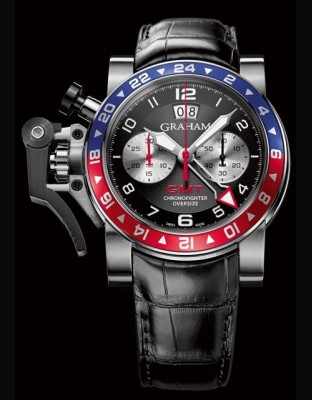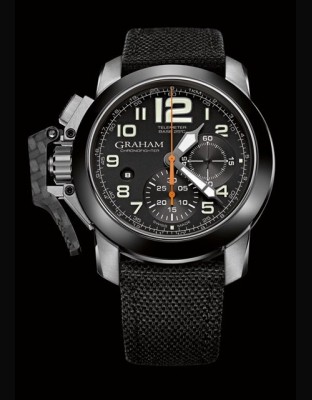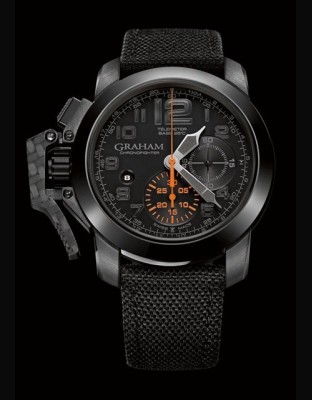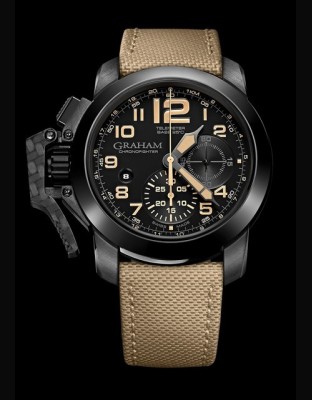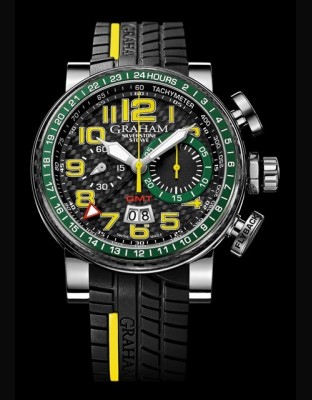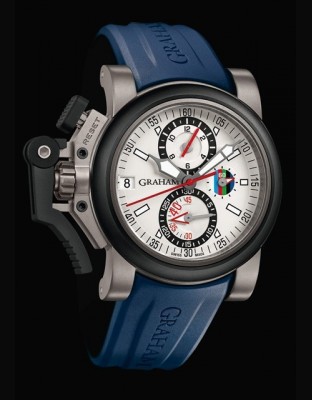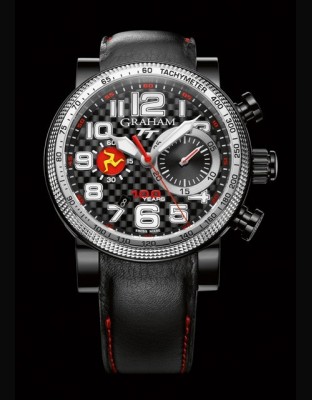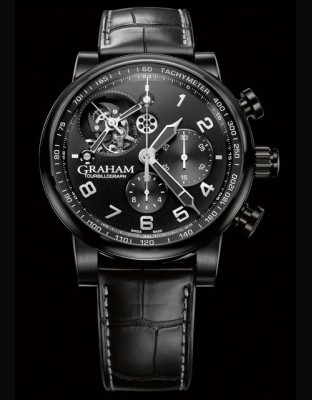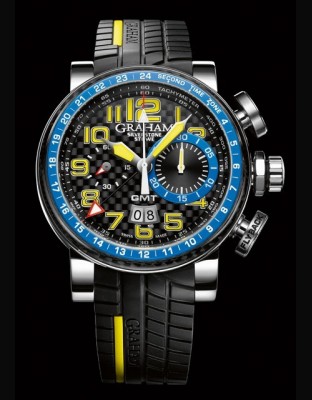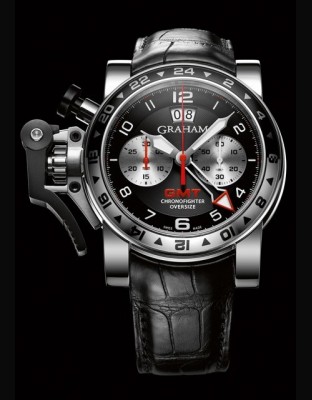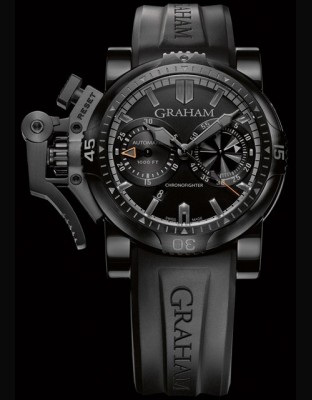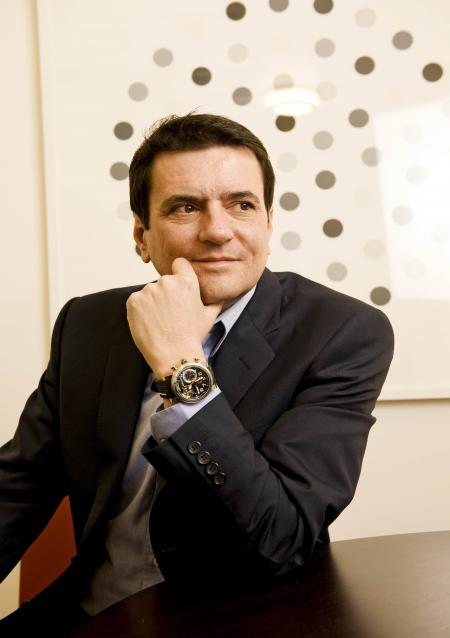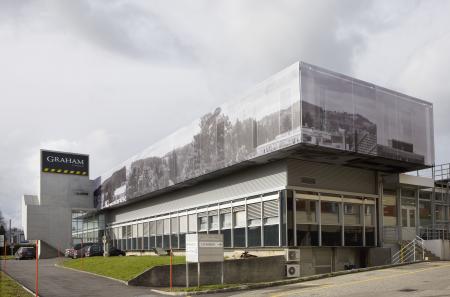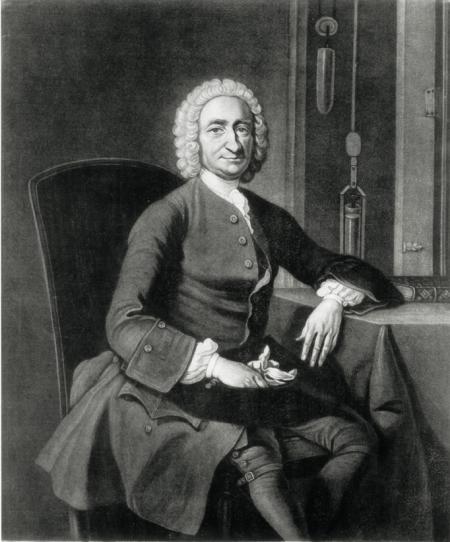1
graham_london

|
||
GRAHAM LONDON – From George Graham to Eric Loth
GRAHAM-LONDON traces its origins to London clockmaker George Graham (1673-1751) who is responsible for many innovations in timekeeping. He invented the chronograph, the dead-beat cylinder escapement, the mercury pendulum to compensate for temperature differences. He also built the master clock for Greenwich Royal Observatory which defined time for most of the 18th century. GRAHAM-LONDON was resurrected in 1995 and is today a privately owned Anglo-Swiss watch company which design and builds its ...

THE COLLECTIONS

-
Chronofighter Oversize...
SEE THE DATA SHEETBrand: Graham London
Collection: Chronofighter
Ref: 20VHS.B39A
Price: 9 050 € -
Chronofighter Oversize
SEE THE DATA SHEETBrand: Graham London
Collection: Chronofighter
Ref: 2CCAC.B03A
Price: 5 140 € -
Chronofighter Oversize
SEE THE DATA SHEETBrand: Graham London
Collection: Chronofighter
Ref: 2CCAC.S01A
Price: 5 140 € -
Chronofighter Oversize
SEE THE DATA SHEETBrand: Graham London
Collection: Chronofighter
Ref: 2CCAU.S01A
Price: 5 140 € -
Chronofighter Oversize...
SEE THE DATA SHEETBrand: Graham London
Collection: Chronofighter
Ref: 2CCAU.B01A
Price: 5 140 € -
Chronofighter Oversize...
SEE THE DATA SHEETBrand: Graham London
Collection: Chronofighter
Ref: 2CCAU.G01A
Price: 5 140 € -
Chronofighter Oversize...
SEE THE DATA SHEETBrand: Graham London
Collection: Chronofighter
Ref: 2CCAU.B02A
Price: 5 140 € -
Silverstone Stowe GMT...
SEE THE DATA SHEETBrand: Graham London
Collection: SILVERSTONE
Ref: 2BLCH.B33A
Price: 8 620 € -
Chronofighter Oversize...
SEE THE DATA SHEETBrand: Graham London
Collection: Chronofighter
Ref: 2OVKT.S07A
Price: 6 920 € -
Silverstone TT
SEE THE DATA SHEETBrand: Graham London
Collection: Tourist Trophy
Ref: 2BLUV.B25R
Price: 6 530 € -
Silverstone...
SEE THE DATA SHEETBrand: Graham London
Collection: Tourbillograph
Ref: 2TSAB.B02A
Price: 41 630 € -
Silverstone Stowe GMT...
SEE THE DATA SHEETBrand: Graham London
Collection: SILVERSTONE
Ref: 2BLCH.B06A
Price: 8 620 € -
Chronofighter Oversize...
SEE THE DATA SHEETBrand: Graham London
Collection: Chronofighter
Ref: 2OVGS.B39A
Price: 9 050 € -
Chronofighter Oversize Diver
SEE THE DATA SHEETBrand: Graham London
Collection: Chronofighter
Ref: 2OVEB.B40A
Price: 9 140 €
GRAHAM LONDON – From George Graham to Eric Loth
GRAHAM-LONDON traces its origins to London clockmaker George Graham (1673-1751) who is responsible for many innovations in timekeeping. He invented the chronograph, the dead-beat cylinder escapement, the mercury pendulum to compensate for temperature differences. He also built the master clock for Greenwich Royal Observatory which defined time for most of the 18th century. GRAHAM-LONDON was resurrected in 1995 and is today a privately owned Anglo-Swiss watch company which design and builds its own watches in its La Chaux-de-Fonds production facilities in Switzerland.
GEORGE GRAHAM
1673-1751
Came to London fairly young. In 1688 he became apprentice to Henry Aske for seven years. He was admitted a freeman of the Clockmakers' Company on completing his indentures in 1695 and immediately entered the service of Thomas Tompion, thus beginning a life-long friendship, severed only by the death of Tompion in 1713. In 1696 he married Tompion's niece Elizabeth. A few clocks and watches during the last years of Tompion's life, are signed 'Tompion & Graham'.
After the death of Tompion, Graham continued the business at the same address, at the sign of Dial and Three Crowns, at the corner of Water lane, in Fleet Street, London. In 1720 he moved to a new house, The Dial and One Crown, at the other side of the same street, nearer Fleet Bridge, next door to the Globe and Duke of Marlborough's Head Tavern, where he remained until his death.
Graham was elected as Fellow of the Royal Society in 1721 and chosen as a Member of the Council of that body in 1722. He contributed 21 papers on various subjects to the Philosophical Translations. He became Master of the Clockmakers' Company in 1722.
After the expiration of Booth, Houghton and Tompion's patent, Graham devoted some thought to the cylinder escapement, which in 1725 he improved to practically its present form, and after 1726 introduced it into all watches. Securing to himself the monopoly of any if his discoveries was foreign to this dispositions. The reputation which English horology acquired on the Continent during the 18th Century was due in no small measure to Graham's candid treatment of his brethren in the art in other countries. In answer to enquiries, Julien Le Roy received from Graham one of his watches with cylinder escapement in 1728 and French horologist's generous avowal of its superiority is worthy of his acknowledged greatness.
He invented the dead-beat escapement in 1715, the Graham device, a type of wall chronograph in 1720 and the mercury pendulum in 1726. The combination of these seventy-four clocks of all types, numbered from 600 to 774. As against this he made nearly three thousand watches. No.4369, still signed Tompion & Graham, cannot therefore be later than 1713 and No.6474, the highest number known up to now, carries the hallmarks for 1751, the year when Graham died. Like Tompion, Graham had a separate series for repeaters, ranging from 402, hallmarked for 1713, to No.965, which must be the last one, since No.968, is signed by Thomas Colley, Graham's successor.
Graham's watches were much forged, even in his life-time, but this may generally be detected since he not only marked the number in the usual place, on the back plate, together with his name, but also on the pillar-plate, under the dial, and on the under-side of the cock.
Immediately after Graham's death, there was some competition to claim his goodwill. Only two days later, the following notice appeared in the General Advertiser : 'Thomas Mudge, watch-maker, apprentice to the late Mr. Graham, carries on business in the same manner as Mr. Graham did, at the sign of the Dial and Crown, opposite the Bolt and Tun, in the Fleet Street.
Graham died in 1751 and was buried in Westminster Abbey.
Eric Loth
Born on December 29th in Bienne
Founder and Member of the Board
The British Masters SA, La Chaux-de-Fonds, Switzerland
Born in Bienne and grown up in Le Locle, Eric Loth has been deeply immersed in the engineering world ever since childhood. His father was a professor at the Engineering School of Neuchâtel; therefore he has always been surrounded by technicians and engineers. His venture into the watch creation world was completely accidental.
He graduated in mechanical engineering (polytechnics) at the Neuchâtel Engineering School. Post graduated in physical metallurgy at the University of Neuchâtel and in business administration at the higher Business Management School I.M.D. in Lausanne.
To this date, through his assignments in different companies and industries (including watchmaking) his work has resulted in no less than 24 international patents in materials technology and watch applications, thanks to his constant drive to develop technical innovations, to convert technical solutions into product design and more generally to bear challenges. His genuine passion is to use his innovation drive and the inspiration he gets from the many forms of Art that he admires, to turn dreams into reality.
In 1994, with the encouragement of his family, friend and partners, the idea of acquiring a watch brand in the luxury segment came up. He was looking for a very special brand through which his passion for innovation and art could be expressed. This set off a long search that resulted in a somewhat unexpected result: the names and incredibly rich history of some great inventors of 17th and 18th century- England. A research and development phase was then entered, between 1996 and 1999, inspired indeed by the rich heritage of George Graham, inventor of the Chronograph among other amazing things and of John Arnold, inventor of breakthrough escapements, a winner of the famous Longitude Prize and by far the leading supplier of Marine Chronometers to Britain's ships (Royal Navy as well as merchant- and explorer- vessels). The product development work was done by taking these inventions and concepts in a much broader sense, and translating them to create very unique, contemporary timekeepers that would stun today's watch-making fans.
In this way, Eric Loth was determined to expose the rich British watch-making heritage and to use it to revive the time honoured English pioneering and innovation tradition in this industry. Within 10 years, The British Masters had (re)established these brands as pre-eminent British spirit- timekeeper purveyors. Eric Loth has the ability to anticipate on trends and with his engineering and scientific background, to collaborate with designer to bring extraordinary British timepieces to life.
From the considerable heritage and history of Graham-London and Arnold & Son, the challenge will be to put the true and timeless spirit and philosophy of these great inventors back at work with that very distinct British attitude.
